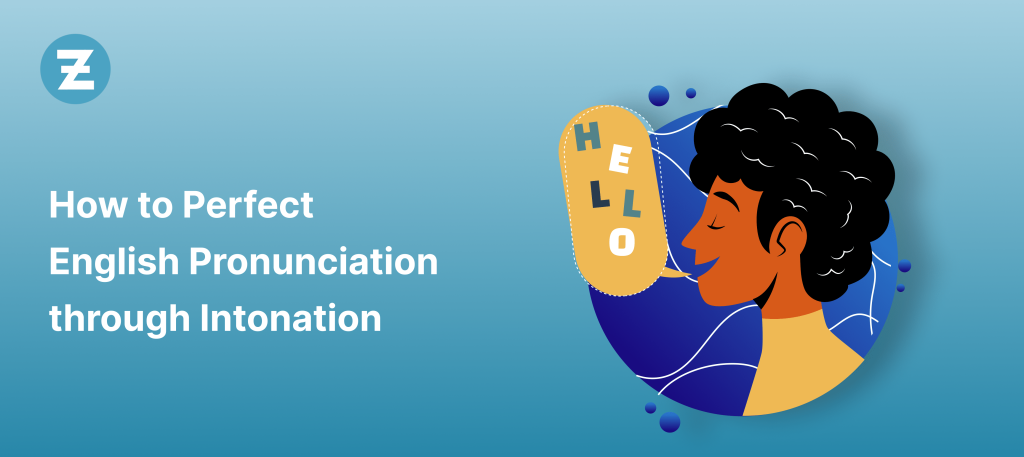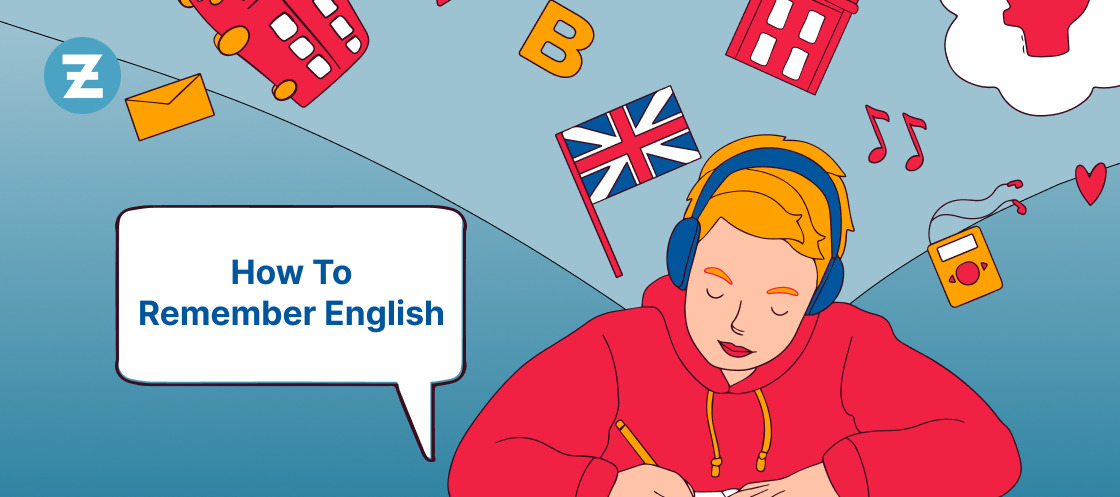When it comes to learning English, pronunciation is probably the hardest part. But once you get it down, your communication skills will skyrocket. One of those things you’ll have to master is intonation. You know, your pitch and tone when talking. This blog post takes a look into the intonation complexities and how to master it.
Understanding Intonation Basics
In English, we use our pitch and tone in a certain way. They’re what help us communicate different emotions and meanings without having to say anything else. Knowing when to fluctuate your voice is key in clear and effective speaking.
1. Intonation in Different Sentence Types
The way a sentence ends typically gives you an idea of the context or emotion behind it. For example, if someone ended their sentence with a period then they’re done talking about that topic so you should stop listening and respond accordingly. However, if their voice goes up at the end then they’re usually asking for something or creating an open-ended statement. Learning these patterns can help you understand people better at face value without overthinking what they said.
2. Intonation in Emotions
Emotion is so hard to convey when you write, but in person it’s easy. If someone asks a question with their voice going upwards, it means they were probably surprised or didn’t believe what they just heard. In simpler terms, it’s like adding an exclamation point or question mark to your words when speaking.
Read Also: Expert Tips and Tricks for Effortless Learning
3. Intonation in Lists
You ever get that feeling when someone says they have five things to tell you? You mentally prepare yourself to hear five sentences and then move on with your day. This is because usually people will use rising and falling tones throughout their list of information so that you know how much more there is left.
4. Intonation in Agreement and Contrast
Agreeing or disagreeing is another thing that’s easy to do in person but not when writing online. When someone agrees with something, their voice tends to rise in pitch at the end of their statement or they might just sound unsure like they’re still asking a question even though their sentence structure isn’t set up that way.
5. Intonation in Narrative and Storytelling
Story time always sounded better than reading, right? It’s because people add emotion behind their words which can make listeners at the edge of their seat waiting for more even if it’s not important information only adds a little surprise factor behind every word spoken.
6. Intonation in Regional Dialects
The way we speak shows where we come from. One of the most noticeable ways is through intonation, the rise and fall of your voice when you talk. It’s spoken so much it almost becomes melodic. Some regions have more distinct patterns than others, like British English with its rising-falling intonation, while American English uses a flatter one. Being able to recognize and use these patterns can help you connect with people a lot more.
7. Intonation in Professional Situations
Introducing yourself isn’t the only important thing when it comes to professional environments. How you present yourself, in every way possible, is also vital. This applies to body language, writing and speaking. How you speak shows your confidence, authority and credibility. It can make or break a deal in a business discussion or negotiation as well as assist you when you’re presenting something. All of this sounds so simple but it’s not. By practicing formal English Intonations, you’ll be able to interact with others on a professional level that will enhance all areas of your work life.
| Upgrade your English pronunciation and listening abilities with Zoundslike’s interactive learning platform! |
Various English Intonations
English has some versatile tones that can express many different emotions, intentions, and sentence types. It is crucial that you know these.
1. Rising Intonation
The most common use for this tone is when asking yes or no questions where the pitch rises at the end of the sentence. It can also be used to indicate uncertainty, surprise or even a request for confirmation.
Example: “Is it raining outside?” (Yes-no question)
2. Falling Intonation
This is normally used for declarative statements where the pitch falls at the end. It’s great for statements, commands and affirmations.
Example: “I am going to the store.” (Declarative statement)
3. Rising-Falling Intonation
A mix between both previous ones. It’s mainly found in lists though. The pitch goes up for each item on the list then falls after all of them are said. Not only does it help keep attention but it also shows that thought is still being put into what they’re saying.
Example: “I need eggs, milk, and bread.” (List with rising-falling intonation)
Read Also: A Step-by-Step Guide to Enhance Your English Accent
4. Confirmation with Rising Intonation
This is used when you want someone to agree with you or validate something you said. The pitch in your voice rises as it comes to a close.
Example: “You enjoyed the movie, didn’t you?” (Confirmation-seeking rising intonation)
5. Certainty with Falling Intonation
When you’re 100% certain about what you’re saying, use this. It’s supposed to emphasize the conviction and finality of your statement.
Example: “I am absolutely certain about this.” (Certainty emphasized through falling intonation)
6. High Rising Intonation
Used when you want more information on something from someone else. It’s where the pitch of your voice gets higher at the end of a sentence.
Example: “Where are you going?” (Wh-question with high rising intonation)
7. Low Falling Intonation
Confidence and authority are felt when using this, which makes it ideal for giving direct commands and talking confidently.
Example: “You will complete the assignment by tomorrow.” (Command with low falling intonation)
8. Mid-Phrase Intonation Changes
To highlight specific words and ideas that are spoken, change how they sound. You won’t see this often in writing since it’s more common in speaking, but it’s essential for conveying complex meanings and emotions.
Example: “I didn’t say she stole the money.” (Emphasis on different words conveys different meanings)
9. Politeness in Tone
Politeness is key when making a request, so people raise their voice at the end of their statement to make it softer. Doing so shows that they aren’t trying to be too demanding or forceful.
Example:“Could you please pass the salt?” (Polite request with rising intonation)
10. Contrastive Intonation
When a person needs to point out differences between two parts of a sentence they’ll exaggerate them in order to clarify what they’re trying to say.
Example:“She didn’t eat the cake; she ate the cookies.” (Contrast emphasized through intonation)
11. Pacing and Pausing Intonation
The rate at which someone speaks controls how speech flows. High rising intonation followed by a pause indicates an incomplete thought or there’s more to come.
Example: “I was thinking, maybe we could… (pause) …go to the beach this weekend?” (Pacing and pausing intonation)
| Start your journey to impeccable English pronunciation with the Zoudslike app. |
Ways to Improve Pronunciation through Intonation
1. Actively listen:
Put in your earbuds and close your eyes — nothing else. Then, find any native speaker conversation, podcast or audio file you can find. Next, take a deep dive into it and pick up on how they use intonation to convey meaning
2. Practice Stress Patterns:
Certain English words have specific syllables that are emphasized over others. You’ll want to practice stressing those exact ones in order to improve the way you pronounce words.
3. Emphasize Key Words:
Just changing one word’s pitch can make it sound more important than the others around it. This helps clarify the main messages in sentences and conversations. If you think about it – it makes sense. We all do it without knowing. To train better comprehension for this, try speaking with emphasis on key words.
4. Practice with Dialogues:
Engaging in dialogues where you can really focus on using the right intonation is a great way to train this skill. Try mimicking native speakers while doing so – to refine your skills.
5. Record and Evaluate:
Get your phone out and record yourself talking – which also has a nice bonus of making people nervous if they don’t like hearing themselves speak. After recording listen back critically at your own speech patterns and pitches used when saying words. Then identify which areas need improvement before working on them specifically
6. Use Intonation in Questions:
Play with the rise and fall of your voice when asking questions. When you want a yes or no answer, let your voice rise up like a rocket. But with wh-questions, let it fall down like a roller coaster.
7. Language Partner:
Find a partner that’ll practice with you and listen to your intonation. You might not be able to hear when you’re off, but it’s a lot easier for someone else to notice. And if they can even give feedback on what sounds better.
| Upgrade your English pronunciation and listening abilities with Zoundslike’s interactive learning platform! |
8. Incorporate Intonation in Reading Aloud:
Reading out loud is good for getting the hang of reading aloud, but if you want to make it more challenging try doing it in poetry or passages that have conversations.
9. Watch Movies and TV Shows:
By now we all know movies and tv shows are great for learning new things about a language. For this specifically though, observe how actors use pitch and rhythm to display emotions and motives.
10. Mobile Apps:
Mobile app stores are filled with apps that can help learn English. Find one that specifically targets intonation exercises and use it so you can practice anytime, anywhere
Read Also: Tips for Better English Pronunciation
Conclusion
Mastering English pronunciation is a wild adventure that takes dedication and persistence. The solution to clear and effective English is understanding how intonation patterns work, then applying it when you talk. Like with anything that takes practice, you’ll move through it over time.
You won’t notice much difference at first, but as you go further down the rabbit hole of this journey, your ability to express yourself in English will take leaps and bounds. People will start to think you were born speaking English.
If you want some extra resources for all this, check out Zoundslike. We have interactive tools and special insights to help master this art of speaking. Good luck on your journey towards confident English Learning!
FAQs:
Q1: What exactly is intonation in English?
Intonation refers to the rise and fall in pitch while speaking, which can convey different meanings, emotions, and intentions in English sentences. It plays a crucial role in effective communication.
Q2: How does intonation affect English pronunciation?
Intonation patterns influence the way words are pronounced and the overall rhythm of speech. Mastering intonation enhances pronunciation by ensuring words are stressed correctly and sentences flow naturally.
Q3: Can improving intonation help non-native speakers sound more natural?
Absolutely. Correct intonation patterns make speech sound more native-like. By mastering intonation, non-native speakers can significantly improve their naturalness and fluency in English.
Q4: Are there specific rules for different types of intonations?
Yes, different types of sentences (questions, statements, commands) and emotions have specific intonation patterns. Learning these patterns and practicing them helps in mastering the rules of intonation.
Q5: How can I practice intonation effectively?
Practice listening to native speakers, repeat sentences, engage in dialogues, and use language learning apps that focus on pronunciation. Consistent practice with feedback is key to mastering intonation.
Q6: Can intonation vary in different English accents?
Yes, intonation patterns can vary in different English accents and dialects. It’s essential to be aware of these variations, especially if you’re learning English for specific regions or contexts.
Q7: What role does intonation play in public speaking?
In public speaking, intonation can emphasize key points, engage the audience, and convey confidence. Mastering intonation is crucial for effective and impactful public speaking.
Q8: How long does it take to improve English pronunciation through intonation?
The time required varies from person to person. With consistent practice and dedication, noticeable improvements can be made within a few weeks to months, depending on the individual’s effort and commitment.
Q9: Can I learn intonation on my own, or do I need a tutor?
While self-study is possible with resources like language apps and online tutorials, having a tutor or language partner can provide personalized feedback and guidance, accelerating the learning process.
Q10: Is intonation important in written communication as well?
While intonation is primarily a feature of spoken language, it can influence the tone of written communication, especially in dialogue or informal writing. Understanding intonation aids in creating authentic dialogue in written texts.








